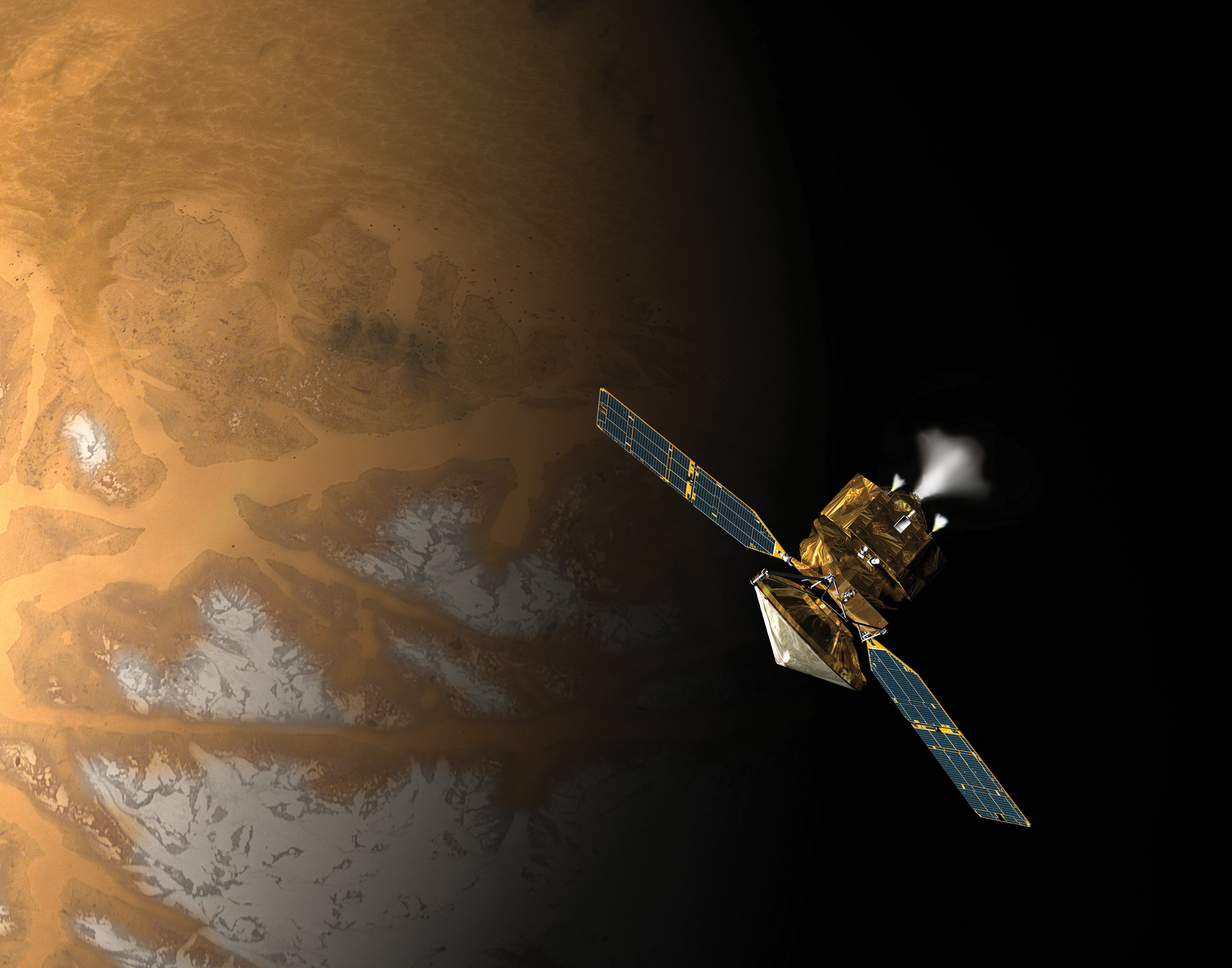CHAPTER
7

Comparative Planetology I: Our Solar System
LEARNING GOALS
By reading the sections of this chapter, you will learn
| 7–1 | The important differences between the two broad categories of planets: terrestrial and Jovian |
| 7–2 | The similarities and differences among the large planetary satellites, including Earth’s Moon |
| 7–3 | How the spectrum of sunlight reflected from a planet reveals the composition of its atmosphere and surface |
| 7–4 | Why some planets have atmospheres and others do not |
| 7–5 | The categories of the many small bodies that also orbit the Sun |
| 7–6 | How craters on a planet or satellite reveal the age of its surface and the nature of its interior |
| 7–7 | Why a planet’s magnetic field indicates a fluid interior in motion |
| 7–8 | How the diversity of the solar system is a result of its origin and evolution |
As recently as the mid-1900s, astronomers knew precious little about the other worlds that orbit the Sun. Even the best telescopes provided images of the planets that were frustratingly hazy and indistinct. Of asteroids, comets, and the satellites (or moons) of the planets, we knew even less.
Today, our knowledge of the solar system has grown exponentially, due almost entirely to robotic spacecraft. (The illustration shows an artist’s impression of one such robotic explorer, the Mars Reconnaissance Orbiter spacecraft, as it approached Mars in 2006.) Spacecraft have been sent to fly past all the planets at close range, revealing details unimagined by astronomers of an earlier generation. We have landed spacecraft on the Moon, Venus, and Mars and dropped a probe into the immense atmosphere of Jupiter. This is truly the golden age of solar system exploration.
In this chapter we paint in broad outline our present understanding of the solar system. We will see that the planets come in a variety of sizes and chemical compositions. A rich variety also exists among the moons (or satellites) of the planets and among smaller bodies we call asteroids, comets, and trans-Neptunian objects. We will investigate the nature of craters on the Moon and other worlds of the solar system. And by exploring the magnetic fields of planets, we will be able to peer inside Earth and other worlds and learn about their interior compositions.
An important reason to study the solar system is to search for our own origins. In Chapter 8 we will see how astronomers have used evidence from the present-day solar system to understand how the Sun, Earth, and the other planets formed some four and a half billion years ago, and how they have evolved since then. But for now, we invite you to join us on a guided tour of the worlds that orbit our Sun.
CONCEPT CHECK 7-1
How many stars are in our solar system?
Our solar system contains only one star, the Sun. The other stars are very far away.